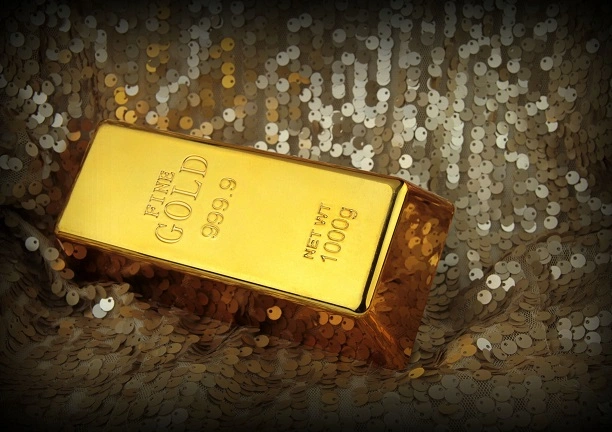The price of 100 grams of gold draws the attention of numerous investors in the UK—be it a neophyte mid-life pension saver or somebody who just wants to scratch that itch to get his hand on a stone-shaped form of financial security stored away in the safe, 100 gram gold price. It is a nice handful—quite heavy, it feels in the hand, and precious enough to be worth attention, besides being in general quite palatable to those who crave a little better than a sprinkling of gold dust. However, before you sink thousands of pounds into a heavy lump of gold or a block of shiny coins, here are a lot of things to consider that would help save money, stress-related migraines, or both. Shall we get down to the nitty-gritty things that determine the price of 100 grams of gold and how you can afford to purchase a bar without hurting your pocket in Britain?
The 100 Gram Benchmark Background
That is why 100 grams is a hot pick? In bullion, one of the problems that customers wring their hands over in the UK is a trade-off between cons and price. The mountains are solid and can be easily traded or sold short; they are not too big, so you can invest something meaningful. It is also an international benchmark at several gold refineries and in some such cases, we have basics such as PAMP Suisse, Metalor and Heraeus.
What is the Composition of the 100 Gram Gold Price?
Pure Gold Content
Begin at the beginning. 24-carat gold implies you will have the whole lot, i.e., there will be no alloys and fillers. Now, 24k gold was about 50 pounds a gram at the time of writing. Work out the sums:
100 grams x 50,000 = 5000.
It is only the raw metal. It will nearly always be higher than the price displayed by dealer websites. Why? Too many hands handle that gold before it drops down in your lap.
Dealer Premiums
Any dealer has to earn a livelihood. On a 100-gram bar the premium will vary between 2 and 7 percent above spot (according to the seller, demand and current mood of the market). That would add a gain of up to a couple hundred pounds of your own 5,000 into a range of 5,100-5,350. Internet-only retailers, major retailers, and the small-town mom-and-pop stores all set the markups at different levels. Even the brand of the bar has a role to play; some buyers will pay more to get PAMP or Metalor, as they bear international prestige and are universally well regarded.
VAT: The Imps in the Running
This is a trap set for naive consumers. In the UK gold in the form of coins, which is classed as investment gold, is VAT-free, although most gold bars, including a 100-gram bar, are VAT-exempt provided they are at least 995/1000 fine. Make sure that it is pure and classified, as the maximum would be the bill with the 20 percent VAT that will surprise you. You should always make sure that you look through the fine print prior to sealing the deal.
Price Volatility: The Reason Why the 100-Gram Gold Price Does Not Stay Put
The price of gold does fluctuate, in some cases subtly, and in other cases in spurts and jumps. The price compass is nudged by political events, economic data, banking woes and even what the big central banks are doing. At the beginning of 2020, the gold price per gram was close to 39 pounds. In the middle of 2024, it is nearer to 50 pounds, with deviations going even higher. That is much more than a 25 percent increase, mainly due to inflation fears and a shaky pound.
Timing matters. A little fall in currency or big geopolitical news can force spot gold prices to rise in an instant. Large purchasers can be expected to monitor such changes as if they were watching weather. In case you are contemplating a 100g bar, you need to have an ear turned on to financial news and spot price charts. Taking the right timing to buy can save you hundreds.
Bullion Bars or Coins: Which Is Best at 100 Grams?
The conventional course is bars on the 100 g mark. Silver bullion coins, such as Britannia or Krugerrand, are sold in 1-ounce (approximately 31.1 g) sizes, so in order to come to your 100 g goal, you would have to buy three of them, and you will exceed it a little. When compared to the three large coins, bars normally cost less per gram. However, the metallic coins have liquidity, particularly those that are recognised coins, like the British Sovereign or Britannia.
Bars are more popular to use in storage, easy to stack and have lower dealer markups per gram than many coins.
Purchasing in the UK: Safe Paths and the Pitfalls to Avoid
Selecting a Dealer: A Good Rep is Money
Not every gold seller is born equal. Others run strong online businesses with live updates of prices and guaranteed delivery. There are also those who sell gold at their fly-by-night stalls where buyers will get the best and exclusive prices, alright! Use familiar names, get reviews and membership to trade associations, and have written commitments.
Never forget to check whether your 100 g bar is highly stamped with weight, purity, and an assay mark. When you get a bad vibe towards the seller or the bar, just leave. There are scams, and the real dealers do not mind being peppered by some questions.
Summarizing on the Golden Rules
Do not rush out to pursue the glint of gold and shower your money over a 100 g bar without doing some investigations. Follow the spot price, check dealer quotations, and keep in mind those additional expenses (shipping, insurance, premium, and possible taxes). Choose what counts: highest resale price, adaptability or tax benefits. The price of 100 grams of gold is the beginning point, but an intelligent buyer needs to go far beyond that price tag. Count every gram, and you will save yourself the expensive pitfalls on your lifelong search after golden security.






